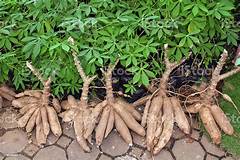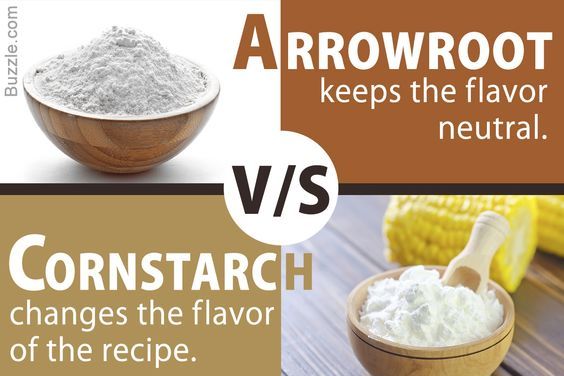Queensland Arrowroot, also known as “Indian shot,” is more than just a decorative plant; it’s a versatile species with a variety of uses and benefits. This article will guide you through everything you need to know about this unique plant, from its identification and growth requirements to its culinary uses and safety around pets.
Article-at-a-Glance
- Queensland Arrowroot is both ornamental and edible, making it a dual-purpose plant.
- It is safe for pets, aligning with ASPCA guidelines on non-toxic perennials.
- The plant thrives both indoors and outdoors, adaptable to various environments.
- Arrowroot can be used as a thickener in recipes, offering a gluten-free alternative to cornstarch.
- Recognizing the plant’s distinct features is key to proper care and utilization.
Let’s dive into the world of Queensland Arrowroot and explore its many facets.
Queensland Arrowroot: A Comprehensive Guide
The Queensland Arrowroot is a plant that belongs to the Canna genus, and it is often recognized by its broad, lush leaves and vibrant flowers. This plant is not only admired for its ornamental beauty but also for its edible rhizomes, which are a rich source of starch.
“Queensland arrowroot” from www.juliasedibleweeds.com and used with no modifications.
What is Queensland Arrowroot?
Queensland Arrowroot is a type of plant that can be found in tropical and subtropical regions. It is often used in gardens to create a lush, tropical feel, thanks to its large, banana-like leaves and striking flowers that bloom in red, yellow, or orange. For those interested in pet-friendly gardening, it’s important to consider the safety of plants like Queensland Arrowroot around pets.
Importance for Pet Safety
When it comes to choosing plants for your home or garden, pet safety is a top priority. Queensland Arrowroot is considered non-toxic to pets, according to the ASPCA. This makes it an excellent choice for households with animals, as you won’t have to worry about your furry friends coming into contact with harmful substances.
Here are some reasons why Queensland Arrowroot is a pet-friendly plant:
- It contains no toxic compounds that can harm cats or dogs.
- The plant’s foliage is robust, minimizing the risk of ingestion.
- Its vibrant flowers are not only beautiful but safe around curious pets.
Recognizing the Indian Shot Plant
Identifying the Indian Shot Plant, another name for Queensland Arrowroot, is crucial for both care and utilization. The plant is distinguished by its broad, lance-shaped leaves that can grow up to 30cm wide. Its flowers, which grow in spikes, resemble orchids and have large, eye-catching petals. For those interested in creating a pet-friendly environment, this plant is a safe and attractive option.
To recognize the plant, look for these features:
- Broad, banana-like leaves with a glossy finish.
- Clusters of vibrant flowers in shades of red, yellow, or orange.
- A height that can reach up to 1.5 meters, making it a prominent feature in any garden.
Being able to identify the Indian Shot Plant ensures you can provide the right care and enjoy its many benefits.
Growing & Caring for Queensland Arrowroot
Queensland Arrowroot is a hardy plant that can thrive in a variety of conditions, making it suitable for both novice and experienced gardeners. Whether you choose to grow it indoors or outdoors, understanding its needs is essential for healthy growth.
“Canna indica gives a tropical feel to the garden, and its ornamental foliage has a close resemblance to banana leaves. This easily grown perennial is very popular due to its showy flowers and striking foliage.”
Growing this plant requires attention to soil quality, sunlight, and watering needs, but its resilience makes it an excellent choice for beginners.
Indoor Growth Tips
Growing Queensland Arrowroot indoors can be a rewarding experience, as it brings a touch of the tropics into your home. Here are some tips for indoor cultivation:
- Light: Place the plant in a spot that receives plenty of sunlight, as it thrives in bright conditions.
- Soil: Use a well-draining potting mix to prevent waterlogging, which can harm the roots.
- Watering: Keep the soil consistently moist but not soggy. Allow the top layer to dry out slightly between waterings.
By following these tips, you can enjoy the lush beauty of Queensland Arrowroot indoors, providing a vibrant focal point in any room.
Culinary Uses of Queensland Arrowroot
Queensland Arrowroot, with its starchy rhizomes, offers a versatile ingredient for various culinary applications. Known for its ability to thicken dishes, it provides a gluten-free alternative to more commonly used thickeners. The rhizomes can be harvested, processed, and used in a variety of recipes, making it a valuable addition to any kitchen.
Beyond its thickening properties, Queensland Arrowroot also contributes a subtle, almost neutral flavor to dishes. This quality makes it an excellent choice for recipes where you don’t want the thickener to overpower the main ingredients. Whether you’re making soups, sauces, or desserts, arrowroot can enhance your culinary creations with ease.
Edible Parts of the Plant
The primary edible part of the Queensland Arrowroot is its rhizome. This underground stem stores nutrients and starch, which can be extracted and used in cooking. It’s important to properly identify and prepare the rhizomes to ensure they are safe and palatable.
When harvesting, ensure the plant is mature, typically in late summer or early fall. Clean the rhizomes thoroughly to remove any dirt or debris before proceeding with cooking preparations.
Cooking Techniques for Arrowroot
Cooking with Queensland Arrowroot involves a few simple techniques that can be easily mastered. Here are some methods to incorporate this versatile plant into your meals:
First, the rhizomes can be grated and cooked to create a thickener for soups and sauces. Start by making a slurry by mixing the grated arrowroot with a small amount of cold liquid. Gradually whisk this mixture into your simmering dish, allowing the starch to thicken the liquid.
Another technique involves using arrowroot powder as a substitute for cornstarch in baking recipes. Its gluten-free nature makes it an excellent choice for those with gluten sensitivities. Simply replace cornstarch with arrowroot powder in your recipes, keeping in mind that you may need to use a slightly larger quantity to achieve the same thickening effect. For those interested in creating a pet-friendly home environment, consider exploring options for pet-friendly furniture to complement your culinary efforts.
Lastly, arrowroot can be used in desserts to provide a subtle thickening without altering the flavor profile of the dish. Its neutral taste ensures that the main ingredients shine through, while the starch enhances the texture and consistency. For those interested in pet-friendly furniture, arrowroot is a safe option for homes with pets due to its non-toxic properties.
Purchasing & Choosing the Right Arrowroot
When looking to purchase Queensland Arrowroot, it’s important to know where to find high-quality products. This ensures that you get the best flavor and nutritional benefits from the plant.
Arrowroot can be found in various forms, including fresh rhizomes and processed powder. Knowing where to buy and how to select quality products is key to making the most of this versatile ingredient. For those interested in the intersection of pet care and home management, consider exploring smart home devices for pet care.
Where to Buy Queensland Arrowroot
Queensland Arrowroot is available at specialty grocery stores, health food stores, and online retailers. When purchasing fresh rhizomes, look for firm, plump specimens that are free from blemishes or signs of decay. For pet owners, it’s important to be aware of animal-assisted therapy benefits which can be enhanced by incorporating natural ingredients like arrowroot into your pet’s diet.
If you’re opting for arrowroot powder, choose products from reputable brands that prioritize quality and purity. Check the packaging for any certifications or labels that indicate the product is organic or non-GMO, as these can be indicators of higher quality.
Choosing Quality Products
When selecting arrowroot products, pay attention to the color and texture. High-quality arrowroot powder should be fine, white, and free from clumps. Avoid any products that appear discolored or have an off-putting odor, as these may be signs of spoilage or poor quality.
Additionally, consider the source of the arrowroot. Products sourced from regions known for their arrowroot production, such as certain parts of South America, may offer superior quality and flavor.
“Arrowroot Vs. Cornstarch” from www.pinterest.com and used with no modifications.
Comparison with Cornstarch
Queensland Arrowroot is often compared to cornstarch due to their similar uses as thickening agents. However, there are notable differences in their properties and applications that can influence your choice in cooking.
Differences in Thickening Properties
While both arrowroot and cornstarch are used to thicken sauces, soups, and desserts, their thickening abilities vary. Generally, you will need to use about twice as much arrowroot as cornstarch to achieve the same level of thickening. This is because arrowroot has a more delicate starch structure, which can result in a slightly clearer, more refined texture in dishes.
Here are some key differences to consider:
- Arrowroot creates a clearer, more glossy finish compared to the opaque thickening of cornstarch.
- It is more stable in acidic dishes, making it a better choice for recipes that contain vinegar or citrus.
- Arrowroot is less effective when used in dairy-based sauces, as it can result in a slimy texture.
Understanding these differences can help you choose the right thickener for your specific recipe needs.
Flavor and Texture Contrast
Another aspect to consider when comparing arrowroot and cornstarch is their flavor and texture impact on dishes. Arrowroot is known for its nearly neutral flavor, allowing the main ingredients to stand out without interference. In contrast, cornstarch is completely flavorless, which can be an advantage in some recipes.
Texture-wise, arrowroot tends to produce a smoother, silkier consistency, especially in fruit-based sauces and clear soups. Its ability to enhance the mouthfeel of a dish without altering its taste makes it a preferred choice for many chefs and home cooks alike.
Ultimately, the choice between arrowroot and cornstarch depends on the specific requirements of your recipe and your personal preferences in terms of flavor and texture.
Substituting Arrowroot for Cornstarch
When substituting arrowroot for cornstarch in recipes, it’s essential to understand their differences in application. Arrowroot, with its more delicate starch structure, requires a slightly different approach. Generally, you should use about twice the amount of arrowroot as you would cornstarch to achieve similar thickening results. For more insights on pet-friendly ingredients, explore our pet-friendly guide.
In recipes, arrowroot is particularly effective in acidic dishes and those where a clear, glossy finish is desired. However, it’s less suitable for dairy-based sauces, as it can create a slimy texture. Therefore, when substituting, consider the nature of the dish to ensure the best outcome.
Canna Indica: Understanding Non-Toxic Perennials
“Canna indica, also known as Indian Shot, is not only a striking ornamental plant but also non-toxic to pets, making it a safe choice for gardens and homes with animals.”
Canna Indica, or Indian Shot, is a robust perennial plant known for its vibrant flowers and lush foliage. It adds a tropical flair to gardens and is a favorite among gardeners for its ease of growth and care.
This plant is particularly appreciated for its non-toxic nature, aligning with ASPCA guidelines, which ensures safety for pets and peace of mind for pet owners. Its ornamental value, combined with its safety, makes it a popular choice for many households.
Characteristics of Canna Indica
Canna Indica is a fast-growing plant that can reach up to 1.5 meters in height. Its broad leaves resemble those of banana plants, providing a lush, tropical appearance. The flowers, which bloom in vibrant colors such as red, yellow, and orange, add a dramatic touch to any garden.
The plant’s ability to thrive in various soil types, including poorer soils, makes it an adaptable choice for different environments. It prefers full sun but can tolerate partial shade, adding to its versatility in garden settings.
ASPCA Guidelines on Non-Toxic Plants
The ASPCA provides guidelines for pet-safe plants, and Canna Indica is listed among the non-toxic options. This ensures that even if pets nibble on the leaves or flowers, they won’t suffer any adverse effects. Choosing non-toxic plants like Canna Indica helps create a safe environment for both pets and family members.
Safe Gardening Practices with Pets
When gardening with pets in mind, it’s crucial to select plants that are safe and non-toxic. Canna Indica fits this requirement perfectly. To further ensure safety, consider the following practices:
- Place non-toxic plants in areas accessible to pets, while potentially harmful plants are kept out of reach.
- Regularly check plants for signs of pest infestations or diseases that could indirectly harm pets.
- Use pet-safe fertilizers and pesticides to maintain plant health without risking pet safety.
By following these practices, you can create a beautiful, pet-friendly garden that everyone can enjoy.
Frequently Asked Questions (FAQ)
Here are some common questions about Queensland Arrowroot and its care, pet-friendly furniture, uses, and safety.
Is Queensland Arrowroot safe for pets?
Yes, Queensland Arrowroot is considered safe for pets. It does not contain toxic compounds that could harm animals, making it a pet-friendly plant choice. Its non-toxic nature aligns with ASPCA guidelines, ensuring peace of mind for pet owners.
However, it’s always advisable to monitor pets around plants, as excessive consumption of any plant material can lead to digestive issues. Keep an eye on your pets and ensure they don’t ingest large quantities of any plant.
Can I grow Queensland Arrowroot indoors?
Absolutely, Queensland Arrowroot can be grown indoors. It thrives in bright, sunny conditions, making it an excellent choice for indoor cultivation. Ensure the plant receives plenty of sunlight, and use a well-draining potting mix to prevent waterlogging.
Regular watering is essential, but be careful not to overwater. Allow the top layer of soil to dry out slightly between waterings to maintain optimal moisture levels. With proper care, Queensland Arrowroot can flourish indoors, adding a tropical touch to your home.
What is the arrowroot equivalent to cornstarch in recipes?
When substituting arrowroot for cornstarch, you generally need to use about twice as much arrowroot to achieve the same thickening effect. This is due to the more delicate starch structure of arrowroot. For more information on understanding product substitutes, check out our guide on choosing the best options for your needs.
- For 1 tablespoon of cornstarch, use 2 tablespoons of arrowroot powder.
- Consider the dish type: arrowroot works best in acidic and clear dishes.
- Avoid using arrowroot in dairy-based sauces to prevent a slimy texture.
These guidelines can help you effectively use arrowroot as a substitute in your recipes, ensuring the desired texture and consistency.
Queensland Arrowroot, commonly known as “Indian shot,” is a plant that poses no threat to pets, according to the ASPCA. This makes it an excellent choice for pet owners who are concerned about the safety of their furry friends. When considering indoor versus outdoor care, beginners will find this plant manageable. Its uses are diverse, and it is even edible. You can learn how to cook with it and where to buy it. Additionally, it can be compared to cornstarch in terms of utility. For more information on pet-friendly options, check out this pet-friendly furniture guide to understand what it means to make your home safe for your pets.







